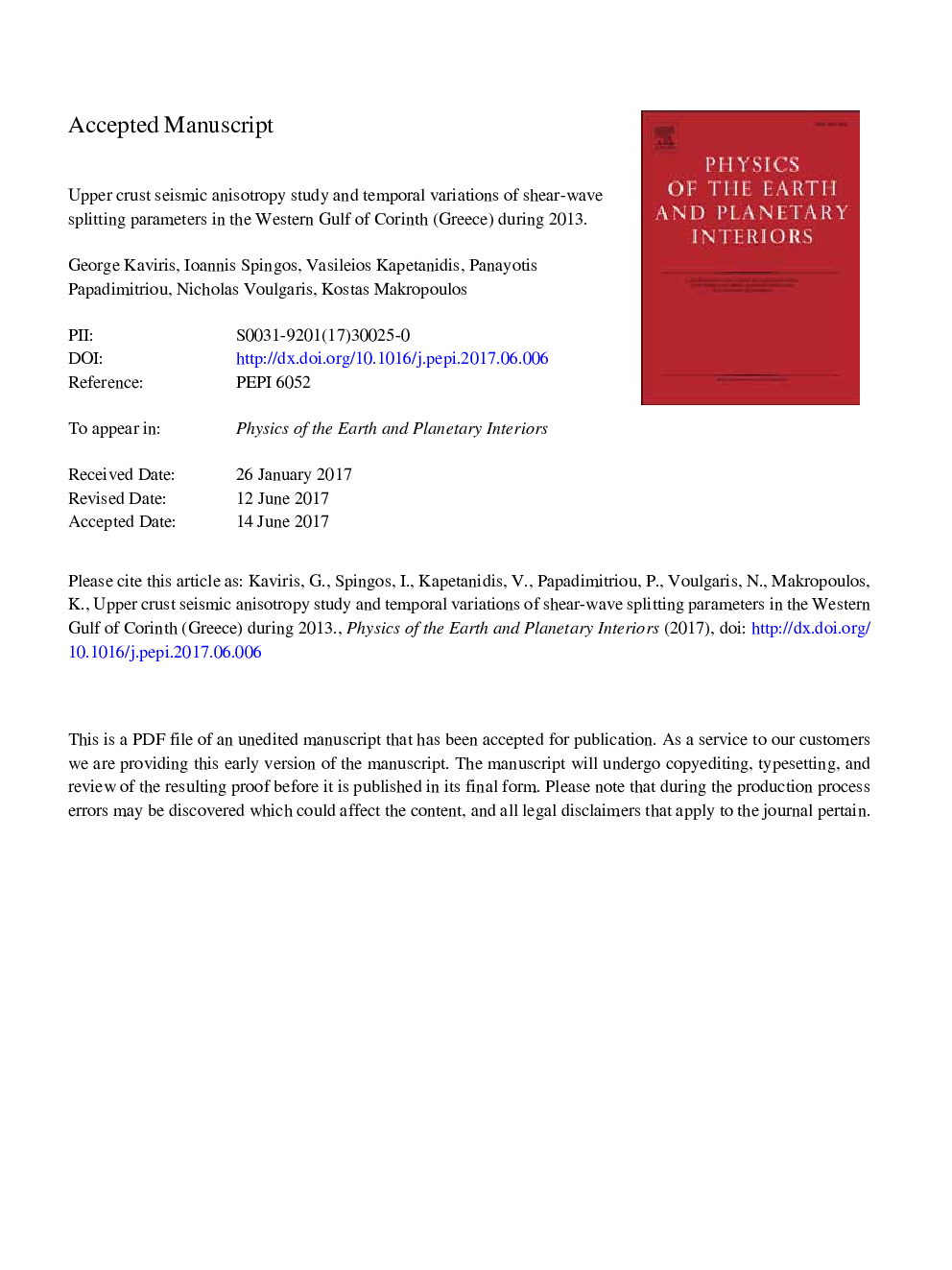| Article ID | Journal | Published Year | Pages | File Type |
|---|---|---|---|---|
| 5787305 | Physics of the Earth and Planetary Interiors | 2017 | 54 Pages |
Abstract
During 2013, the Western Gulf of Corinth (WGoC, Central Greece) experienced a period of increased seismicity, with a total of over 4700 earthquakes. This fact in combination with the existence of dense seismological networks provided an excellent opportunity for the study of crustal seismic anisotropy. Of special note is the seismic crisis period of May-October, during which the main feature was the occurrence of the Helike seismic swarm. Polarigrams and hodograms were employed to analyze local waveforms. This method resulted in 659 measurements of shear-wave splitting parameters, namely the direction of the fast shear-wave (Sfast), the time-delay (Td) between the two split shear-waves and the source polarization direction. A pattern of a general WNW-ESE anisotropy direction, parallel to the GoC's fault systems' strike, is established, with the exception of two stations located in adjacent areas at the north. This is in agreement with the existence of fluid-filled microcracks, oriented according to the regional stress field. The obtained splitting parameters are compared to the results of other anisotropy studies performed in the WGoC. A detailed analysis of the temporal evolution of the normalized time-delay (Tn) was performed to associate temporal stress changes to seismicity fluctuations. Increase in normalized time-delays and drop before the occurrence of the first significant event belonging to the “July Cluster”, which occurred between the 13th and the 16th of the same month, was observed for most of the analyzed stations.
Related Topics
Physical Sciences and Engineering
Earth and Planetary Sciences
Geophysics
Authors
George Kaviris, Ioannis Spingos, Vasileios Kapetanidis, Panayotis Papadimitriou, Nicholas Voulgaris, Kostas Makropoulos,
